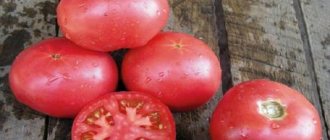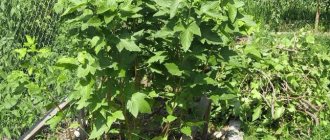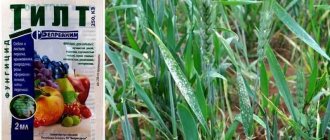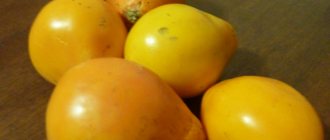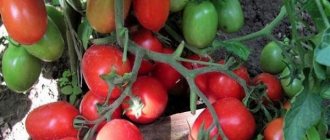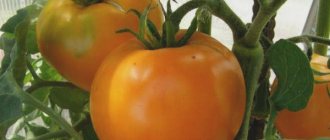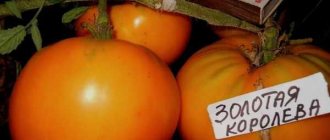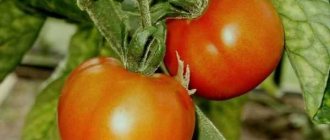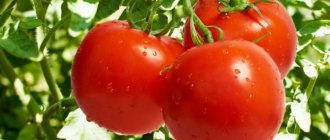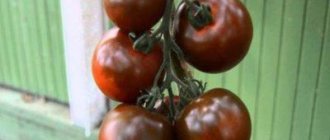Description of the variety
The work of hybridization is a complex process. Tomato “Treasure of the Incas f1” was no exception. For several years, step by step, breeders have been trying to take the best from the parent pairs in order to give the world a masterpiece. And they succeeded.
- author of the hybrid Kiramov A.D.;
- originator - Belokin-Mechtalin V.I.;
- The applicant of the variety is LLC TK Leader, Moscow.
Description of the bush and fruit
“Treasure of the Incas” is stated as a first generation hybrid. This means that there is no point in collecting seeds from tomatoes for further reproduction. However, having sowed them and grown a tomato, the vegetable grower realizes that there is no point in wasting money on seeds - they are worth it.
The hybrid is indeterminate. Its growth does not end with a flower brush, but continues until a person finishes it by biting the top. The bush itself, when formed into one shoot, is not particularly different from other varieties and hybrids.
- height - up to 2 meters;
- leaf - medium size;
- leaf color is deep green;
- inflorescence - simple.
Early ripening hybrid. Having sowed seedlings in early March and received quick shoots, the plant grows intensively, rushing to please the vegetable grower with its first fruits.
Indeed, there are not many large-fruited hybrids and especially varieties that can quickly:
- increase vegetative mass;
- produce an ovary;
- grow a large fruit;
- accumulate the optimal amount of sugar.
As the reviews say, “Treasure of the Incas” can. 90-95 days after full germination in the greenhouse, the plant already produces the first salad tomato. The fruit is flat-round, classic in shape. It feels dense to the touch. By taking it in your hand, you can clearly feel the weak rib, although it is not noticeable when contemplating it. It's all about the color.
The unripe fruit is no different. It is green without pronounced dark greenery at the stalk. The shape, even of the ovary, is seen as flat-round. She is growing quickly and gaining weight. The tomato grows, comes into color and it becomes clear that it will not be ordinary. The colors are not uniform and spread out in stripes and spots all over the tomato. Reds turn to orange and yellow. Such tomatoes are called “marble” or bicolor. But the variety register describes them as orange-red. The weight of average fruits is within 240-250 g.
Taste qualities of fruits
The fruit of the “Treasure of the Incas” tomato is pleasant to look at and elastic. Trying to inhale the aroma, you feel a light veil of nightshade scent.
The beauty of a tomato is enhanced when it is cut into two halves. The orange marbling extends to the flesh. Seed nests are difficult to see due to their dense texture; there are 4-6 of them. There are few seeds and they are in the “body” of the pulp.
Having passed the tests, the tasting commission in all regions of the country gave the tomato an “excellent” rating. This suggests that the hybrid can accumulate sugars under different weather conditions. Organic acids are so balanced in the fruit that the sourness becomes pleasant and almost imperceptible.
Not everyone likes sweet tomatoes. However, when sugars and acids have an optimal ratio, the tomato acquires an unforgettable taste.
Description and characteristics of the Treasure of the Incas tomato, reviews, photos
Medium-early, tall, large-fruited tomato hybrid from . In the middle zone, it is recommended to grow it in a greenhouse. The period from germination to the beginning of ripening is 90-95 days.
Bush of indeterminate type, up to 1.8 meters high . Requires gartering to the support and pinning. The manufacturer recommends forming the plant into 1 stem, removing all side shoots (stepchildren).
This tomato has a regular type of leaf. The first inflorescence with 4-6 fruits is laid above the 7th leaf, the subsequent ones - every three leaves.
Basic qualities of fruits
The fruits are round-heart-shaped, orange with pink blush at maturity, weighing 250-700 grams , fleshy, low-seeded, very good taste. The cut flesh is orange with pink streaks.
This hybrid is resistant to cracking, durable, transportable, and heat-resistant. Resistant to tomato mosaic virus, verticillium blight, fusarium blight, alternaria blight, and phytosporosis.
Productivity : over 5 kg of fruits per plant (with watering and fertilizing).
A site about tomato varieties with truthful reviews from gardeners - Tomatland.
Characteristics of the variety
This tomato, despite the high cost of the seed material, is a must-try. A promising hybrid will give the vegetable grower a good harvest of tasty fruits.
Advantages and disadvantages
The “Treasure of the Incas” tomato is included in the register of breeding achievements of the Russian Federation with the following characteristics:
- first generation hybrid;
- early ripening;
- indeterminate;
- salad;
- large-fruited;
- orange-red color.
It is difficult to judge which of the above is an advantage and which is a disadvantage. Each vegetable grower selects hybrid varieties to suit their growing conditions.
But the yield indicators are impressive. According to reviews from those who have already planted the hybrid, it has the following advantages:
- heat resistant;
- lightweight;
- does not crack;
- has excellent transportability.
Productivity
The hybrid was assigned an average yield of 16-18 kg per m2. This is an excellent indicator. Such results can be achieved when grown in a greenhouse. In the garden, of course, the gross harvest may be lower. However, given the early ripeness, it is quite possible to harvest such a crop on a personal plot.
Advice. Whatever the genetic potential of the hybrid, nutrients are needed for yield. Don't deny the plant this.
The hybrid is very responsive to:
- regular watering;
- timely root feeding;
- foliar spraying.
Fertile soils allow you to get an excellent harvest of delicious tomatoes.
Area of application of fruits
The hybrid “Treasure of the Incas” is served as a salad. The fruits have a dense skin, and the pulp itself is cut very evenly and neatly. The peel perfectly holds the shape of the bars and layers. At the same time, it is quite eatable.
Since seeds are expensive, it is not at all profitable to process such fruits. But the yield is high and when planting 10 bushes there will certainly be a surplus. You can make tomato juice from them. The product turns out:
- thick;
- sweet;
- saturated.
However, there is a drawback to processing - color. Since the fruits are orange, the juice is somewhat pale. You can correct the situation by adding other varieties of tomatoes. At the same time, the taste will also change, but will not become worse.
Resistance to diseases and pests
The variety register lists the hybrid “Treasure of the Incas” as moderately resistant to tomato diseases. If it is grown in a greenhouse, then it is possible to regulate humidity and temperature. At the same time, late blight cannot cause harm.
A vegetable garden is a completely different matter, especially in those regions where:
- the heat gives way to coolness;
- there is a high probability of prolonged rains;
- Autumn is coming quickly with cold nights.
Under such cultivation conditions, prevention is the only method to obtain a harvest.
The world has long learned to prevent the action of the fungus that causes late blight. 2-3 treatments with fungicides are enough and the harvest will be saved.
describes the variety as super resistant to many diseases. However, reviews from gardeners show that this is not always the case.
Growing regions
Having entered the variety testing “Treasure of the Incas”, it took two years to pass them through all regions of the country. And in 2022 it was successfully registered and recommended for cultivation throughout the country for:
- vegetable gardens;
- personal plots;
- summer cottages and greenhouses.
The tomato is so flexible that it can adapt and gain sugar content even under not entirely favorable conditions in mid- and northern latitudes.
Features of cultivation
The “Treasure of the Incas” tomato is also called the “Gold of the Incas” for its unpretentiousness. The author really tried.
Landing rules
Early tomato. If you are planning a greenhouse, then March 1 to 5 are quite normal dates for sowing warmed and sprouted seeds. In this case, shoots will appear by March 20. If the greenhouse is heated, it can be done earlier.
For quick germination, do this:
- seeds are placed in a damp cloth;
- wrapped in a plastic bag;
- put in a warm place.
After 3 days the result is visible.
By this time, the tubs need to be filled with soil for seedlings. It must be warmed up and compacted. Lay out the seeds and sprinkle with soil. We water with warm water. Let's create a greenhouse. For this you can use:
- special tubs for seedlings with a transparent lid that creates a greenhouse effect;
- plastic film or bag;
- glass.
The place of germination may be dark, but it must be warm. Tomato is heat-loving. Its seeds are able to germinate at temperatures above 22 ᵒC.
The first shoots will be visible in 5-6 days. After another 4-5 days, when 70% of the seeds have sprouted, the cover can be removed.
Transplanting seedlings
If the sowing was done in a common tub, then replanting is carried out when the seedlings grow a pair of true leaves. This is the moment of the dive. This period is very important for the “Treasure of the Incas” hybrid. An early tomato needs a quick start for a quick harvest. That is why it is necessary to dive into individual containers with a volume of at least 0.5 liters.
Advice. Dive into individual containers. A closed root system when transplanted to a permanent place will allow the plant not to stop developing and time will not be lost.
After transplanting into glasses, they will require from the grower:
- regular watering with water draining into the pan;
- air temperature at night 16-17 ᵒC;
- warming during the day at a temperature of 22-23 ᵒC;
- the brightest place on the windowsill.
At the age of 55-65 days, the seedlings will be strong and stocky. It is ready for transplanting into a greenhouse and open ground.
With a closed root system, replanting proceeds without problems. If she stretches out a little, then she is planted deeper. To do this, dig a larger hole, and the capacity of the glass is planted there using the transfer method.
Watering and fertilizing
The “Treasure” waterings do not have any special features. They should be carried out:
- regularly, depending on the heavenly moisture;
- warm water;
- volumetrically, so that after watering the entire root system is in moist soil.
Fertilizers for productive and large-fruited hybrids are very important, especially if soil fertility is in question.
You need to start feeding planted tomatoes after 15-20 days. To do this, you can use a solution of manure from cattle, pigs, horses, or chicken droppings. Organic, excellent, balanced nutrition. Prepare fertilizing “compote” as follows:
- 1 kg of manure or 0.5 kg of chicken droppings is sent into a bucket;
- fill with water;
- stir;
- leave to saturate for 1 day.
This fertilizer is quite concentrated. You can’t apply it directly to the root. It should be dissolved in irrigation water. To do this, take 1 liter of nutrient solution per bucket of water and mix it with irrigation water. Apply half a liter to each bush.
Feeding should be done every 12-15 days. Such an event will ensure balanced nutrition of the bush and an optimal set of vegetative mass.
Pinching and tying
It is better to lead the Inca treasure in one escape. To do this, you need to regularly remove all stepsons. You should not let them outgrow; they draw nutrients onto themselves.
The best time for pinching is a size of 1-2 cm. At this age, the tissues are tender, pliable, and easy to pinch off directly with a fingernail. As the stepson grows, it becomes denser and then they resort to using scissors or a knife.
If there are few seedlings, then the lowest stepsons can be grown to 5-6 cm, cut off and rooted in water.
As the shoot grows, it needs to be tied to supports. The stem should not be allowed to bend under the weight of the fruit.
Formation
The southern regions can afford to form a hybrid in two shoots. To do this, leave one stepson, which is formed above 7-8 leaves. The remaining stepsons are removed.
The northern regions also carry out the formation of two shoots in heated greenhouses. If a tomato is planted in open ground, then only in one shoot.
Advice. Soberly assess the nutritional value of the soil. If they are not very fertile, then cultivate only one shoot.
Tomato care
The Incan treasure needs regular:
- watering;
- feeding;
- bush formation;
- fixation of shoots.
If nature sets up a test of endurance and the plant gives only a bouquet of yellow flowers, you need to help it. Apply foliar feeding.
For better formation of the ovary, you need to treat the buds and young ends of the stems with a solution of boric acid. To do this, prepare a nutrient preparation from 0.5 g of boric acid and one liter of water. Spraying is best done in warm, sunny weather.
Tips for growing the Treasure of the Incas tomato variety
The crop is grown by seedlings. The soil composition should include turf, peat, wood ash, and sand. The hybrid bears fruit better when grown in greenhouses. The bush is tall and needs to be tied to a support; it should be formed one at a time, two stems at a time, and cut off the remaining stepsons. Due to the fairly high ripening speed, the crop bears fruit well even in regions with short summers.
When to sow tomatoes for seedlings Treasure of the Incas
Seeds are planted in mid-March, two months before transplanting to a permanent location. The soil and seeds are disinfected with a solution of potassium permanganate. Peat pots, boxes, and cassettes are suitable as containers. The seeds are planted in the soil to a depth of 1 cm, leaving a distance of 3-4 cm between each seed. The ground is watered, the container is covered with film and placed in a warm place.
How many days do the seeds take to germinate?
At a constant temperature of 23-25 degrees, seedlings sprout after 5-7 days. As soon as 2-3 leaves are formed on the plants, they are planted in separate containers, and the top of the main root can be cut off so that the seedlings do not grow so much in height in the future. A week later, complex fertilizer is added to the soil with the seedlings. Approximately 11-14 days before transplanting into open ground, seedlings are hardened at a temperature of about 16 degrees.
When and at what distance to plant in the ground
The seedlings are transferred to the ground in mid-May, approximately 60 days after sowing the seedlings. Three bushes per 1 m2 should be planted, the distance between each bush should be about 0.5 m, between rows 0.7 m. The soil for replanting is prepared in advance, loosened, holes are dug, adding humus and wood ash into them. You can lay mulch on the ground. The bushes must be tied up and pinched.
Ripening period
In mid-summer, 90-95 days after the emergence of seedlings, they begin to harvest. As was written earlier, the yield of the hybrid depends on the growing conditions; in greenhouses and greenhouses the yield reaches 15-18 kg/m2, in open beds from 12 to 14 kg/m2. High yields in open ground can only be achieved in a warm climate in the southern regions.
Watering
The soil must be moistened regularly, twice a week, in the morning or evening. About 5 liters of settled water should be used per 1 m2; during the flowering period, if necessary, the volume of liquid added should be slightly increased.
What and when to feed
Fertilizers are applied once every 2-3 weeks, the soil is usually fed with superphosphate, this allows plants to be provided with the mineral elements necessary for development: nitrogen, phosphorus, sulfur, calcium, magnesium. Humus, peat, manure, wood ash, and herbal infusion are used as natural fertilizers.
Diseases and pests
The crop is resistant to the main set of diseases, but for prevention before replanting, plants can be treated with fungicides: topaz, foundationol, quadris. If insects suddenly claim their rights to the seedlings, they can be persuaded using insecticides: matcha, euphoria, vertimek.
Diseases and pests
The Inca Treasure does not show increased resistance to any diseases, everything is at an average level. Therefore, prevention and protection are needed.
Protection from diseases and pests
Tomato pathogens are constantly waiting for the right moment to “attack” and disappoint the gardener. Tomatoes can get sick:
- late blight;
- fusarium;
- top rot.
However, by carrying out preventive treatments and avoiding excesses in the microclimate of the greenhouse, all these ailments can be easily avoided.
Pest and disease control
As soon as a small ovary appears, this is a signal for the first treatment. Of course, you need to take weather conditions into account. If the cultivation area is south, then there is no need to rush with spraying. At temperatures above 25 ᵒC, the fungus cannot develop.
Once the weather suits the test, regular treatments are needed.
For spraying tomatoes, you cannot use the same product throughout the season. Alternate fungicides. This will make it impossible for the microorganism to become accustomed.
Those vegetable growers who have been working with tomatoes for a long time have their own favorites. Proved themselves perfectly:
- Ridomil Gold;
- Quadris;
- Bordeaux mixture.
The instructions for the drug will help you properly prepare the solution and process it.
Agricultural technology and reviews from experienced farmers
The Inca Treasure is not difficult to grow or care for. Nevertheless, there are several nuances that are worth paying attention to:
- plant seedlings no more than 3 per 1 sq. m.;
- form the plant into one (ideally) or two stems;
- it is necessary to normalize the number of tomatoes in the bunch in order to get uniform large fruits on the bush;
- in the greenhouse, pinch the top of the main stem after the 7th cluster, and after the 5th in the OG, leaving one leaf on top.
People's opinions about tomatoes can be found out from numerous reviews on the Internet.
- Tatyana from the Perm region writes: “The price of the seeds is “biting”, but the germination rate was 100%. Grown in 1 and 2 trunks. The harvest was not a record one, and the fruits were not super large, but they were so beautiful that I took photos of these charming tomatoes almost every day. The taste exceeded all my expectations - I haven’t tasted such sweet tomatoes for a long time.”
- Nikolai from Komsomolsk-on-Amur shares: “I don’t know whether it was because of the weather or other reasons, but many of the fruits were cracked, and this hybrid was one of the first to develop brown spot. Cracked tomatoes do not last long; you need to eat them right away or process them. During transportation, tomatoes are easily wrinkled and, accordingly, begin to deteriorate. In general, I’m not sure that I will grow them next season.”
- Maria from Rostov region Fr.
Our brief acquaintance with the tomato has come to an end. If you have not yet finally decided whether to have the Inca Treasure on your land, watch the thematic video.
Errors during cultivation
The main mistakes that vegetable growers make when growing the “Treasure of the Incas” hybrid are:
- low soil nutrition. You cannot grow a huge harvest out of nothing. To produce large fruits, you need not only the wonderful genes of the ancestors, but nutritious soils;
- lack of timely watering. Nutrients are absorbed by the roots only in dissolved form. The earth dried up - nutrition stopped, growth stopped. Recovery takes time. The soil should not be allowed to dry out;
- improper bush formation. In pursuit of a super harvest, gardeners leave 4 or even 5 shoots. By doing this they turn the bush into a broom. The hybrid is strong, but it can't pull much. Thus, it does not show even half of its potential.
Photo
Looking at the photo of the hybrid “Treasure of the Incas” you can find significant differences. The seed market requires control. A mismatch may get into the bag, accidentally or intentionally. Of course, having bought seeds for a lot of money, a vegetable grower expects something tasty and beautiful, but he gets what he gets.
Those vegetable growers who are lucky can boast of large tomatoes with a bicolor orange-red, striped color - this is the same notorious hybrid.
The cross-section of the fruit is just as good in the photo. Smooth, beautiful, meaty, it just begs to be added to a salad.
